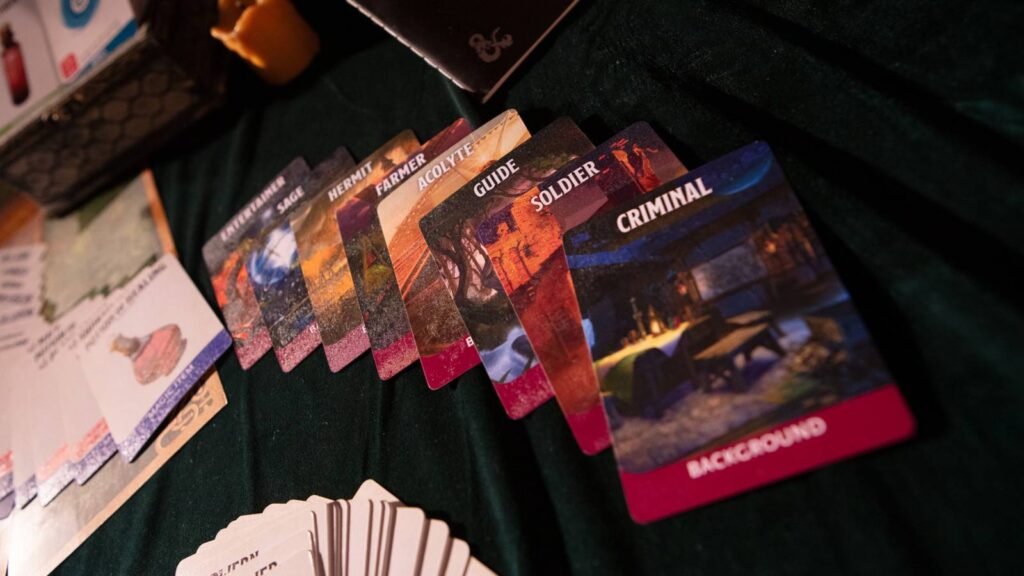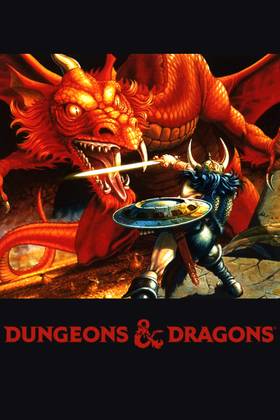
One of my very first experiences with Dungeons & Dragons was purchasing Lost Mines of Phandelver – a previous starter set – and running it for my friends. Despite watching live plays and reading the player’s handbook over and over, there was still a lot of initial confusion over certain mechanics. This can really slow the pace of the game, and some excitement will inevitably dissipate after twenty minutes of googling and flicking through the module book.
A problem with Dungeons & Dragons has always been accessibility. It’s difficult to absorb every mechanic of a tabletop role-playing game all at once. These issues have always been offset by having a player with enough experience to answer any questions that newcomers have, but that isn’t always an option for every prospective party.
Extremely Accessible
So, I’m happy to report that Dungeons & Dragons’ newest starter set, Heroes of the Borderlands, solves the majority of these issues. This is done through the board gamification of fifth edition D&D. Gone are the archaic character sheets of old that you had to fill in with a pencil. Imagine that, a pencil in this day and age? No chance.
Heroes of the Borderlands is inspired by The Keep on the Borderlands, a 1979 module by Dungeons & Dragons creator Gary Gygax.
Instead, Heroes of the Borderlands has convenient class sheets for Rogue, Wizard, Cleric and Fighter. This limitation has the bonus effect of stopping the first-time player who insists they must play a homebrew subclass with five unique mechanics and a custom 30-sided die. You get three versions of every class, for levels one through three.
On this class card, you place other cards detailing your chosen species, class, and so on. You also get cards for equipment, weapons, and spells, giving detailed descriptions of each so nobody has to go poring over the Player’s Handbook to know what their character is capable of. Lastly, there are cards that detail what players can do during their turn, including descriptions of every potential action, such as run, hide, etc.
It feels like Wizards of the Coast thought of everything. You need only ask a player to pick a class, race, and background from a deck of cards, and they’re more or less ready to play once they’ve been doled out their requisite equipment and spells. There are also tokens for health points, gold and ‘power tokens’ that represent spell slots, class features, and so on. It’s as plug-and-play as a tabletop role-playing game will ever get.
Adventure Awaits
There are three different mini-modules included in the set, one focused on exploration, one focused on role-playing, and one focused on dungeon crawling/combat. It’s designed as a gradual introduction of the game’s core mechanics, and they flow very well into one another. There are some cool optimisations for Dungeon Masters, too.
There are stat block cards for every encounterable creature, so you don’t need to copy them down like I did once upon a time. There are also cards for every NPC, which include a picture, some personality cues for the DM and even rumours that the character can tell the player if they ask.
A starter set that doesn’t neglect the learning curve for DMs is very welcome and a great help when a party is made up of brand-new players. Heroes of the Borderlands even encourages the party to switch DMs between modules, allowing everyone to get experience on both sides of the table.
There’s still a need for improvisation and role-playing skills for the DM. It’s not as if there’s an exact script for them to read from, so a certain type of person is still suited to the role, regardless of the starter set’s handrails.
In combat, the starter set comes with tokens for players, enemies, hazards, and so on. There are a lot of combat maps in the box, with many of them meant to be used in the combat-focused module, Caves of Chaos. The booklet has exact instructions for where enemies should be placed on each map, as well as a recommendation for where players should start, in case they need a little;e nudge.
In all my time playing Dungeons & Dragons, I don’t think I’ve played faster combat rounds. All of the information is right in the player’s face, so there’s little deliberation necessary when deciding what to do. This was very refreshing, because combat rounds with new players are infamously tedious and can take an incredibly long time.
I have fond memories of Lost Mines. It was my first D&D experience, and the module is well-paced with plenty of scope for hijinks. However, I feel new players are much better served by Heroes of the Borderlands, which feels like it was designed with complete newcomers in mind, and doesn’t lean on the knowledge of experienced players to make it work.
I’m not a fan of a lot of Wizards’ decisions regarding Dungeons & Dragons, but I can’t help but admit that this set is a very positive development for new players.

- Original Release Date
-
1974
- Player Count
-
2+
- Age Recommendation
-
12+ (though younger can play and enjoy)
- Length per Game
-
From 60 minutes to hours on end.


